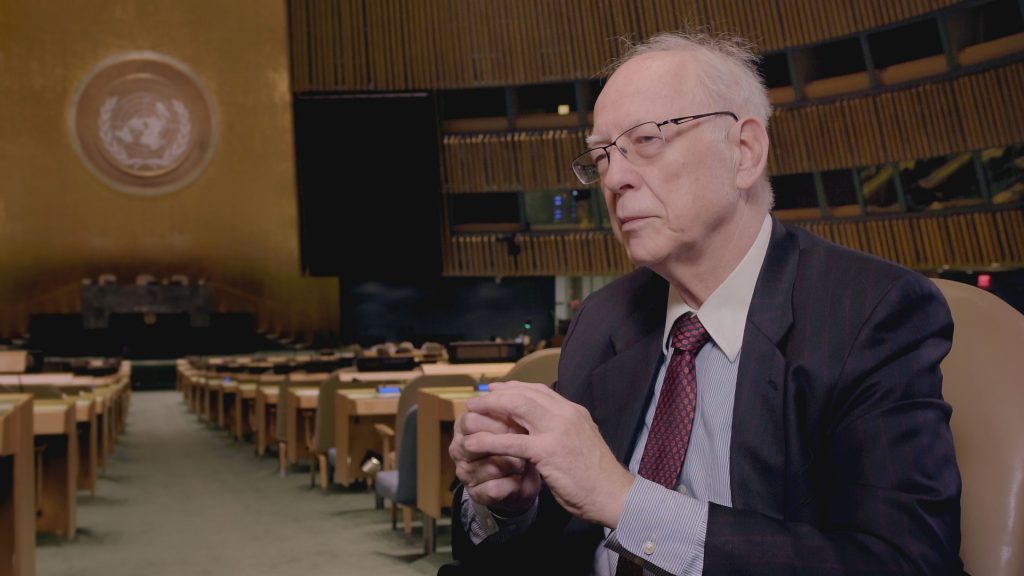
High Wire: A Behind-the-Scenes Look at a Historic Decision
High Wire: A Behind-the-Scenes Look at a Historic Decision
The few days I spent in Afghanistan in 2011, working on an NFB documentary about the Royal 22e Régiment, had a huge impact on me. We spent a week “outside the wire”—that is, at forward operating bases dozens of kilometres from Kandahar. The farther we got from KAF (Kandahar Airfield), the more absurd the situation seemed.
On the one hand, you had KAF, a massive air base the size of Montréal–Trudeau Airport, receiving more than 100,000 litres of bottled water every day for the 40 or 50,000 people working there (when I was there, the supplier was Coca-Cola). On the other, you had the Afghans, who had to travel three kilometres on foot to get their water.
Despite the glaring contrasts between the aggressors and the aggrieved (I leave it up to the reader to decide which is which), nearly 20 years after the attacks of September 11, 2001, coalition forces still haven’t managed to contain and/or defeat the “enemy.”

That situation forms the basis of my documentary High Wire. The purpose of the film is not to preach to the choir, or to experts, or to students of international politics. The purpose of the film is to raise questions in the viewer’s mind. In the run-up to the invasion of Iraq in 2003, eyes glued to CNN, I seriously wondered whether I was the only one who grasped that there were no weapons of mass destruction in the country. And yet, “experts” were trying to persuade us otherwise. So what was the real reason for invading a country that had already been brought to its knees by a decade of sanctions?
WATCH THE DOCUMENTARY HIGH WIRE
An aside: I had always found it odd that the word “terrorism” was rarely heard before the fall of communism. While researching this film, I realized that the war industry is so important to the United States economy that its raisons d’être have been regularly and skilfully reinvented.
The CIA, for instance, flat-out lied about the size of the Soviet nuclear arsenal to exaggerate the threat it posed; this was then used to justify increases to the U.S. “defence” budget, which today amounts to some $800 billion. And yet in 1960, the outgoing president, Dwight D. Eisenhower, had sounded the alarm about the “military-industrial complex”; but is there any question about who’s still at the helm of the US government today?
Dominique Desjardins, an executive producer at the NFB, gave me the greenlight to begin the investigate stage for a film about the invasion of Iraq. The first person I contacted was Paul Heinbecker, the former Canadian Ambassador to the United Nations. Our initial meeting by phone lasted 45 minutes, and he told me he was surprised no one had yet thought of making a film on the subject that would tell the story behind the scenes, from the perspective of the Canadian government and the UN.

To my great surprise, I learned how much influence Canada had at the time with the member countries of the UN Security Council. Heinbecker related how the White House had even tried to sideline him, as it had done with uncooperative ambassadors from other countries.
This was followed by equally fascinating meetings with Claude Laverdure and Edward Goldenberg, both advisers to then Canadian Prime Minister Jean Chrétien. We were fortunate to talk to Mr. Chrétien himself on two occasions. The interviews with Karine Prémont and Chantal Hébert helped me clarify aspects of the story, and my meeting with Dr. Miloud Chennoufi was decisive in the development of the script.
I met Dr. Chennoufi at a lecture given at Alliance Française in Toronto. We went for a coffee together, which stretched into two coffees. He greatly enlightened me about foreign policy in general, and Middle Eastern history more specifically. It’s a complex matter, and it was really thanks to him that I gained the confidence to sit down with the people I interviewed in the film.

I thank Dominique Desjardins and Denis McCready, who produced the film, as well as the NFB team, and especially our editor, Boban Chaldovich.
Postscript: Out of fear of upsetting the United States and undermining the economic status quo between our countries, nearly half of Canadians polled at the time preferred that lives be sacrificed—the lives of our Canadian Forces personnel and those of countless Iraqis. As Paul Heinbecker stated so well: “What you’re talking about is having Canadians get killed, and kill Iraqis.” However, the game is now being played out on our own turf. By closing the borders with the United States to uphold its territorial integrity and safeguard Canadian lives, our country is once again having to dance on the high wire. Only this time, the American government is dangerously unpredictable and without scruples.



